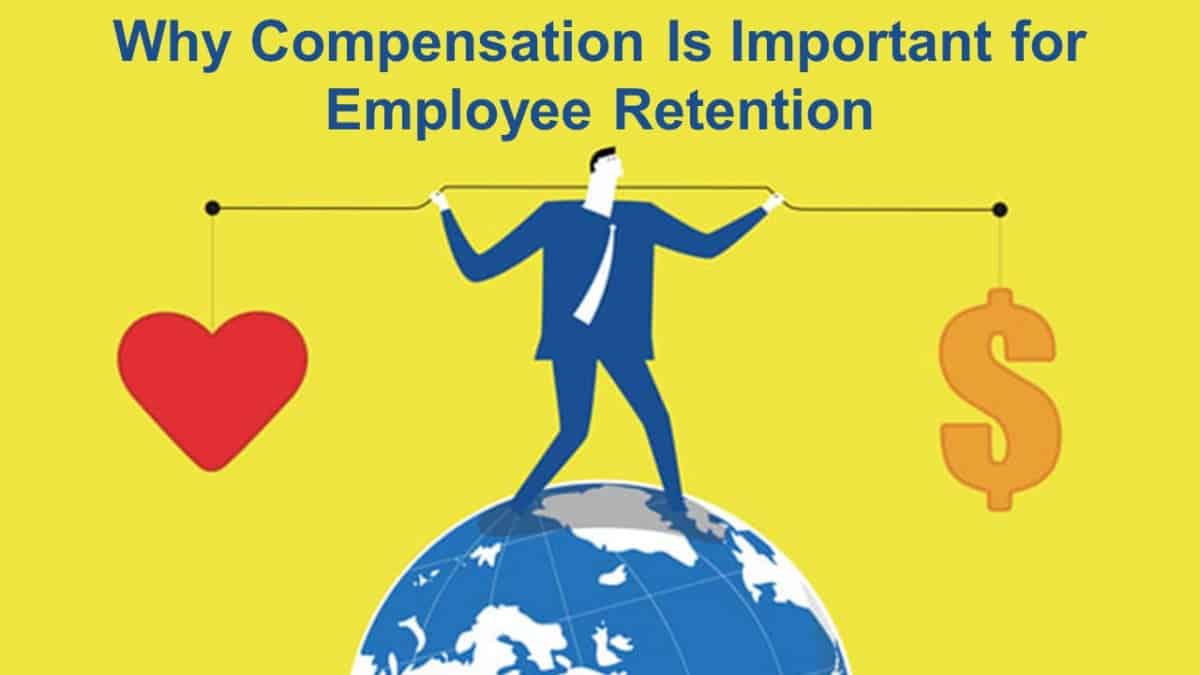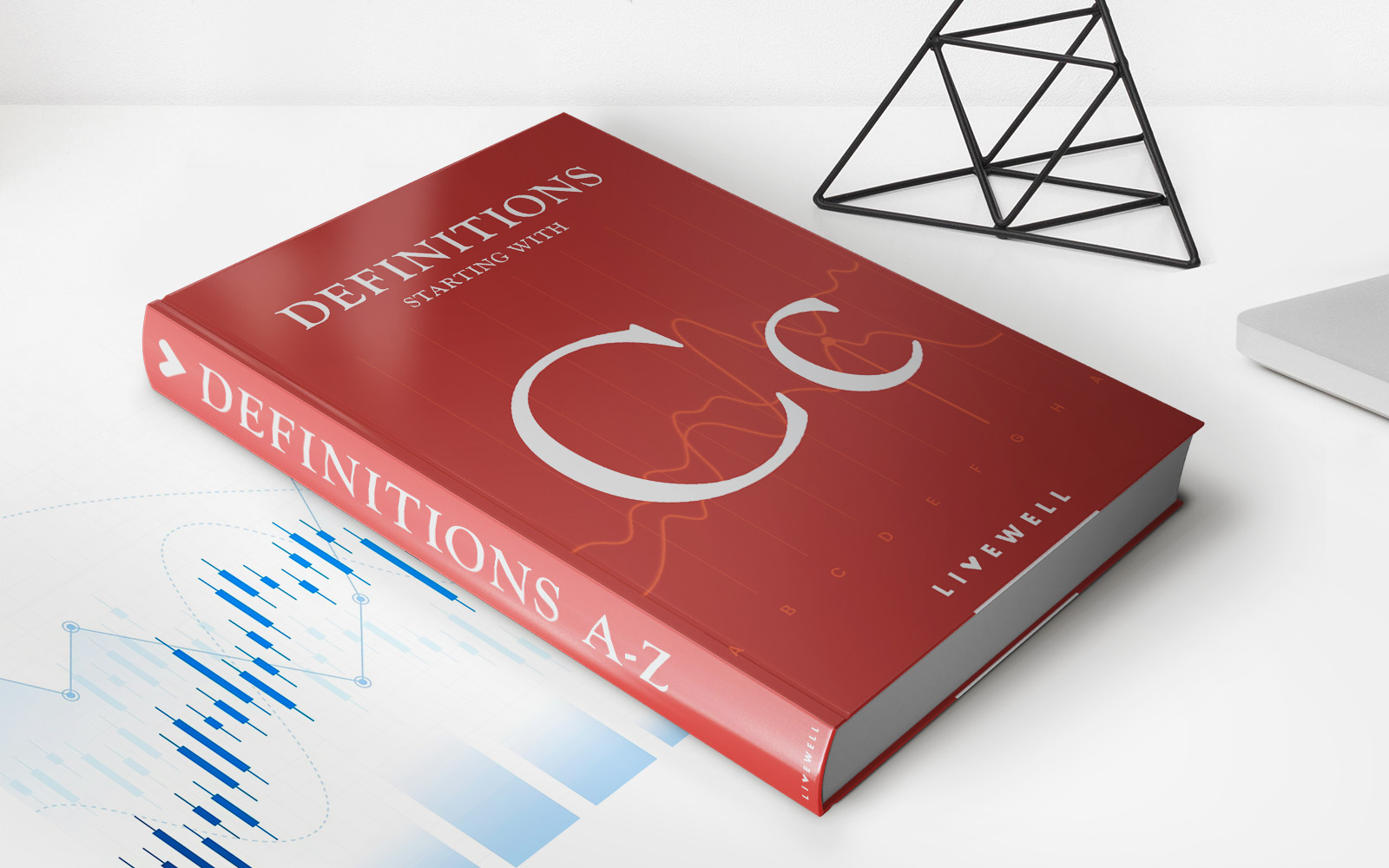

Finance
What Does It Mean To Bind Insurance?
Published: November 15, 2023
Are you confused about what it means to bind insurance? Our comprehensive guide will help you understand the intricacies of binding insurance in the finance industry.
(Many of the links in this article redirect to a specific reviewed product. Your purchase of these products through affiliate links helps to generate commission for LiveWell, at no extra cost. Learn more)
Table of Contents
- Introduction
- Definition of Insurance Binding
- Importance of Insurance Binding
- Process of Binding Insurance
- Key Considerations in Insurance Binding
- Benefits and Limitations of Binding Insurance
- Common Misconceptions about Insurance Binding
- Examples of Insurance Binding in Practice
- Potential Risks and Challenges in Insurance Binding
- Conclusion
Introduction
Insurance binding is a fundamental concept in the world of finance that is essential for both individuals and businesses alike. In simple terms, insurance binding refers to the initiation of an insurance policy. It is the process of making an agreement between the insurance company and the policyholder, where the insurer agrees to provide coverage in exchange for premium payments.
Insurance binding is an important step in securing financial protection against potential risks and uncertainties. Whether it’s home insurance, car insurance, or business insurance, binding a policy ensures that individuals and businesses have the necessary coverage in the event of an unfortunate incident.
In this article, we will explore the ins and outs of insurance binding, discuss its importance, and shed light on the processes involved. We will also delve into key considerations, benefits, limitations, and common misconceptions associated with insurance binding. Additionally, we will provide real-life examples and highlight potential risks and challenges that individuals and businesses may face when binding insurance policies.
So, whether you’re new to the world of insurance or seeking a deeper understanding of insurance binding, join us as we delve into this crucial aspect of financial protection.
Definition of Insurance Binding
Insurance binding can be defined as the formal process of initiating an insurance policy. It is an agreement between the insurance provider, often referred to as the insurer, and the policyholder, who is seeking coverage. The insurer agrees to offer financial protection against specific risks or losses, while the policyholder commits to paying the required premium.
When an insurance policy is bound, it means that the coverage is activated and the policyholder can receive benefits in accordance with the terms and conditions outlined in the policy. Binding insurance provides individuals and businesses with a sense of security, knowing that they are protected against potential financial liabilities arising from unforeseen events.
During the insurance binding process, the insurance company evaluates the risk associated with providing coverage to the policyholder. This evaluation includes examining factors such as the policyholder’s personal or business history, the nature of the coverage required, and any potential risks or claims that have been made in the past. Based on this assessment, the insurer determines the premium rate to be paid by the policyholder.
Insurance binding is not limited to a specific type of insurance. It can apply to various forms of insurance policies, such as auto insurance, life insurance, property insurance, liability insurance, and more. The specific terms and conditions may vary depending on the type of insurance and the insurance company providing the coverage.
Overall, insurance binding is a crucial step in the process of obtaining insurance coverage. It establishes a legal and financial agreement between the insurer and the policyholder and provides the policyholder with the peace of mind that they have appropriate protection in place.
Importance of Insurance Binding
Insurance binding plays a pivotal role in the financial well-being and stability of individuals and businesses. Here are some key reasons why insurance binding is so important:
- Financial Protection: Binding an insurance policy provides individuals and businesses with financial protection against unexpected events. Whether it’s a car accident, a natural disaster, a medical emergency, or a liability claim, having insurance coverage in place can help mitigate the financial burden that these incidents can bring.
- Legal Requirements: In many cases, insurance binding is a legal requirement. For example, most jurisdictions require drivers to have auto insurance, homeowners may be required to have home insurance by their mortgage lenders, and businesses may need liability insurance to operate legally. By binding an insurance policy, individuals and businesses comply with these legal obligations.
- Peace of Mind: Knowing that you have insurance coverage can provide peace of mind. It allows individuals and businesses to focus on their daily activities and operations without constantly worrying about potential financial losses. With insurance in place, there is a sense of security and protection against unforeseen circumstances.
- Asset Protection: Insurance binding helps protect your valuable assets. Whether it’s your home, car, business property, or personal belongings, having the appropriate insurance coverage can safeguard these assets in the event of damage, theft, or other covered perils. Insurance can help in repairing or replacing these assets, saving you from significant financial setbacks.
- Liability Coverage: For businesses, insurance binding is crucial for liability coverage. It protects against claims and lawsuits that may arise due to accidents, injuries, or damages caused by products, services, or business operations. Without proper liability coverage, businesses may be exposed to substantial legal and financial risks.
In summary, insurance binding is of utmost importance to ensure financial security, legal compliance, and peace of mind. It protects individuals and businesses from the financial impact of unexpected events, allows them to meet legal requirements, and safeguards assets and liabilities. By binding insurance policies, individuals and businesses can effectively manage risks and focus on their personal or professional endeavors.
Process of Binding Insurance
The process of binding insurance involves several steps that ensure the successful initiation of an insurance policy. Here is a breakdown of the typical process:
- Evaluation and Application: The first step in binding insurance is evaluating your insurance needs and completing an application form. Provide accurate and detailed information about yourself, your assets, or your business, as this information will be used to assess the risk and determine the appropriate coverage and premium.
- Quote and Premium Determination: Once the application is submitted, the insurance company will review the information, assess the risk, and provide you with a quote. The quote specifies the coverage details, policy limits, deductibles, and the premium amount that you need to pay for the insurance policy.
- Acceptance and Payment: If you are satisfied with the quote, you can accept the offer by making the premium payment. This payment is typically done either as a lump sum or through installments, depending on the insurer’s policies. Once the payment is received by the insurance company, the coverage becomes effective.
- Issuance of Policy Documents: After the payment is received, the insurance company will issue the official policy documents, which outline the terms and conditions of the insurance policy. These documents include the policy number, coverage details, policy limits, policy period, and any endorsements or exclusions.
- Policy Review: It is essential to review the policy documents carefully to ensure that the coverage matches your requirements and expectations. If there are any discrepancies or questions, contact your insurance agent or representative for clarification.
- Policy Activation: Once the policy documents are received and reviewed, the insurance policy is considered activated or bound. From this point onwards, you are eligible to receive the benefits and coverage as outlined in the policy.
It’s important to note that the process of binding insurance may vary depending on the type of insurance and the insurance company’s specific procedures. Some policies may require additional steps, such as a home inspection or medical examinations, especially for life or health insurance.
As a policyholder, it’s crucial to understand the terms and conditions of your insurance policy, including the coverage limitations, deductibles, and any exclusions. This awareness ensures that you are adequately protected and know what to expect in the event of a claim.
By following these steps and familiarizing yourself with the insurance company’s requirements, you can successfully bind an insurance policy that suits your needs and provides the necessary coverage for your personal or business assets.
Key Considerations in Insurance Binding
When binding an insurance policy, there are several important factors to consider. Understanding these key considerations can help you make informed decisions and ensure that you have the right coverage for your needs. Here are some crucial aspects to keep in mind:
- Coverage Needs: Assess your specific insurance needs and determine the types of coverage that are essential for your situation. Whether it’s property, liability, health, or other forms of coverage, understanding your needs is paramount in selecting the right policy.
- Policy Limits: Pay attention to the policy limits, which define the maximum amount the insurance company will pay in the event of a claim. Ensure that the limits align with your financial exposure and provide adequate protection against potential losses.
- Deductibles: Consider the deductibles associated with the insurance policy. A deductible is the amount you must pay out of pocket before the insurance coverage kicks in. Opting for a higher deductible can lower your premium but may require you to pay more in the event of a claim.
- Exclusions and Limitations: Review the policy exclusions and limitations. These are specific situations or circumstances where the insurance policy does not provide coverage. Understanding these exclusions is crucial to avoid any surprises when filing a claim.
- Claims Process: Familiarize yourself with the insurance company’s claims process. Understand the steps involved and the documentation required in the event of a claim. Knowing how to navigate the claims process can help you streamline the experience and expedite reimbursement or benefits.
- Policy Renewal: Consider the renewal terms of the insurance policy. Insurance coverage typically lasts for a specific period, and it’s important to understand the renewal process. Be aware of any changes in premium, terms, or conditions that may occur upon renewal.
- Insurance Provider: Research and choose a reputable insurance provider. Consider factors such as financial stability, customer reviews, and the company’s track record in handling claims. A reliable insurer ensures that you can rely on them when you need them the most.
Additionally, consult with an experienced insurance agent or broker who can guide you through the process and provide insights based on your specific needs. They can help you understand the policy terms, compare different options, and make informed decisions about coverage limits, deductibles, and premiums.
Remember, insurance binding is a long-term commitment, so it’s crucial to carefully evaluate and consider these key factors before finalizing your insurance policy. By doing so, you can have the peace of mind that comes with knowing you are adequately protected against potential risks and liabilities.
Benefits and Limitations of Binding Insurance
Binding insurance offers numerous benefits, but it’s essential to be aware of its limitations as well. Understanding both aspects will help you make informed decisions when selecting and utilizing insurance policies. Let’s explore the benefits and limitations of binding insurance:
Benefits of Binding Insurance
- Financial Protection: One of the primary benefits of binding insurance is the financial protection it provides. Insurance coverage can help individuals and businesses mitigate the financial losses that may arise from unexpected events such as accidents, natural disasters, or liability claims.
- Peace of Mind: Knowing that you have insurance coverage in place can provide peace of mind. It allows you to navigate daily life or run your business with confidence, knowing that you have a safety net to fall back on in case of unforeseen incidents.
- Compliance with Legal Requirements: Binding insurance ensures compliance with legal requirements. Many jurisdictions mandate certain types of insurance, such as auto or workers’ compensation insurance, to protect individuals, employees, and the public. By binding insurance, you fulfill these legal obligations.
- Asset Protection: Insurance coverage helps protect valuable assets, whether it’s a home, vehicle, or business property. In the event of damage, loss, or theft, insurance can provide the necessary funds to repair or replace these assets, safeguarding your financial investment.
- Risk Mitigation: Insurance binding allows individuals and businesses to transfer their risk to an insurance company. By paying regular premiums, you shift potential financial burdens associated with certain risks onto the insurer, reducing your own exposure to those risks.
Limitations of Binding Insurance
- Premium Costs: Insurance premiums can be a financial burden, especially for comprehensive coverage or policies with low deductibles. It’s important to carefully consider the cost-benefit analysis and ensure that the premiums fit your budget and overall financial plan.
- Coverage Limitations and Exclusions: Insurance policies often have limitations and exclusions that may leave certain risks or events uncovered. It’s crucial to review the terms and conditions of the policy to understand these limitations and exclusions to avoid unexpected gaps in coverage.
- Claim Process: The process of filing and settling insurance claims can be complex and time-consuming. It may involve paperwork, documentation, and communication with the insurance company. Understanding the claims process and adhering to its requirements is essential to ensure a smooth and efficient claims experience.
- Potential Premium Increases: Insurance premiums can increase over time due to various factors, such as inflation, changes in risk assessments, or a history of claims. Policyholders should be prepared for potential premium hikes when renewing their insurance policies.
- Policy Limitations: Insurance policies have limits on coverage amounts, which may not fully compensate for certain losses or damages. It’s vital to carefully review and understand these limits to assess whether additional coverage or supplementation may be necessary.
By understanding the benefits and limitations of binding insurance, you can make informed decisions, select appropriate coverage, and manage your expectations effectively. Remember to review policies carefully, ask questions, and seek advice from insurance professionals to ensure you choose the insurance that best fits your needs.
Common Misconceptions about Insurance Binding
Insurance binding can seem complex, and there are several common misconceptions surrounding this process. It’s important to dispel these misconceptions to have a better understanding of how insurance binding works. Let’s address some of the most prevalent misconceptions:
- Insurance Binding is Instantaneous: One common misconception is that insurance coverage is immediate as soon as the policy is bound. In reality, there may be a waiting period specified in the policy before certain coverages come into effect. It’s important to review the policy documents to understand the time frames and any waiting periods associated with specific coverages.
- Binding Insurance Means You’re Fully Covered: Although binding insurance provides coverage, it’s crucial to understand the specific terms and limits of the policy. Each policy has its own set of coverage limits, deductibles, and exclusions, which may result in certain events or losses only being partially covered or excluded altogether. Reading and understanding the policy documents will help manage expectations regarding coverage.
- Binding Insurance is a One-Time Process: Insurance policies are typically annual contracts that require renewal. Binding insurance is not a one-time process; policyholders need to renew their coverage periodically. Renewals allow the insurance company to reassess the risk and adjust premium rates accordingly based on any changes, such as claims history or market conditions.
- Insurance Binding Covers Any and All Losses: Insurance policies are designed to provide coverage for specific risks, as outlined in the policy documents. However, not all losses or damages will be covered. Policies have exclusions and limitations that define what is not covered. It’s important to carefully review and understand these exclusions to avoid misunderstandings or false expectations.
- Binding Insurance is Expensive: While insurance premiums can add to your financial obligations, there are various factors that determine the cost, such as the type of coverage, deductibles, and the level of risk associated with the insured party. It’s important to shop around, compare quotes, and work with an insurance agent to find the best coverage at the most competitive price.
These common misconceptions can lead to misunderstandings about insurance coverage and potentially affect decision-making when it comes to binding insurance policies. By understanding the true nature of insurance binding, policyholders can make more informed choices, set realistic expectations, and ensure they have the appropriate coverage for their needs.
Examples of Insurance Binding in Practice
Insurance binding is a common practice across various areas and industries. Let’s explore a few examples to better understand how insurance binding works in practice:
- Auto Insurance: When purchasing auto insurance, the process of binding the policy involves providing information about the vehicle, the drivers, and any additional coverage required. Once the application is submitted, the insurance company evaluates the risk and provides a quote. Upon acceptance and payment of the premium, the policy is bound, and coverage begins. This ensures that the vehicle and its occupants are protected in the event of accidents, theft, or other covered incidents.
- Home Insurance: Binding home insurance involves evaluating the property’s value, location, and the homeowner’s specific coverage needs. The insurance company assesses the risk and provides a quote for coverage, including protection against fire, theft, natural disasters, and liability. Once the premium is paid, the policy is bound, providing financial protection for the structure, personal belongings, and liability claims arising from the property.
- Business Insurance: Binding business insurance requires a thorough analysis of the company’s operations, assets, and potential risks. The insurance provider assesses the business’s industry, size, and specific coverage requirements. The policy may include property and liability coverage, workers’ compensation, business interruption, and professional liability. Once the premium is paid, the policy is bound, ensuring financial protection and risk mitigation for the business.
- Health Insurance: When binding health insurance, individuals provide personal information, medical history, and desired coverage. The insurance company evaluates the risk and determines the premium based on factors such as age, pre-existing conditions, and chosen coverage options. Once the policy is bound, individuals can access healthcare services, including hospital visits, prescription medications, and preventive care, as outlined by the policy.
- Liability Insurance: Liability insurance binding is crucial for businesses and professionals who may face claims or lawsuits arising from their operations or services provided. Whether it’s general liability, professional liability (errors and omissions), or product liability insurance, the binding process involves evaluating the business’s specific risks, determining coverage limits, and setting the premium. Once the policy is bound, the business or professional is protected against financial loss resulting from covered liability claims.
These examples highlight the practical application of insurance binding across various areas. The binding process ensures that individuals and businesses have the necessary coverage in place to mitigate financial risks associated with different types of situations, from accidents and property damage to liability claims and medical expenses.
It’s important for individuals and businesses to carefully assess their specific needs and work with experienced insurance professionals to select the most appropriate policies and coverage options for their circumstances.
Potential Risks and Challenges in Insurance Binding
While insurance binding provides important financial protection, there are potential risks and challenges that individuals and businesses may encounter. Being aware of these factors can help policyholders navigate the insurance landscape more effectively. Let’s explore some of the potential risks and challenges associated with insurance binding:
- Underinsurance: One risk is the possibility of being underinsured. This may occur if policyholders do not adequately assess their coverage needs or fail to update their policies as their circumstances change. Underinsurance can lead to financial hardships if a claim exceeds the policy limits, potentially leaving individuals or businesses exposed to significant out-of-pocket expenses.
- Premium Affordability: Premium affordability can pose a challenge, particularly for individuals or businesses on tight budgets. Insurance premiums can vary based on factors such as coverage limits, deductibles, and the level of risk associated with the insured party. Balancing the need for adequate coverage with budgetary constraints can be challenging, requiring policyholders to carefully evaluate their priorities and explore different coverage options.
- Claim Denials and Disputes: Despite binding an insurance policy, there is always the risk of claim denials or disputes. Insurance companies may deny claims if they believe the situation falls outside the policy coverage or if there are discrepancies in the information provided. Resolving claim disputes can be time-consuming and may require legal intervention, causing additional stress for policyholders.
- Policy Changes and Renewals: Policyholders should be mindful of potential changes in policy terms, conditions, or premiums upon renewal. Insurance companies may modify coverage options or adjust premiums based on factors such as claims history, market conditions, or changes in risk assessments. It’s essential to review policy changes carefully and evaluate alternative coverage options, if necessary, to ensure ongoing suitability.
- Understanding Policy Exclusions and Limitations: Insurance policies often have specific exclusions and limitations that define what is not covered. It’s important to thoroughly read and understand these policy provisions to avoid unpleasant surprises when filing a claim. Misinterpretation or lack of awareness of exclusions can lead to denied claims or misunderstandings about the extent of coverage.
To mitigate these risks and challenges, it’s crucial for policyholders to conduct a thorough evaluation of their insurance needs, review policy terms and conditions carefully, maintain open communication with insurance providers, and work with experienced insurance professionals who can provide guidance and support along the way.
By being proactive and well-informed, individuals and businesses can navigate the potential risks and challenges associated with insurance binding, ensuring that they have appropriate coverage and peace of mind when it comes to protecting their financial interests.
Conclusion
Insurance binding is a vital process that provides financial protection and peace of mind to individuals and businesses. It establishes the agreement between the insurance provider and the policyholder, ensuring coverage in exchange for premium payments. Understanding the ins and outs of insurance binding is crucial for making informed decisions and selecting the right policies.
Throughout this article, we have explored the definition of insurance binding and its importance in safeguarding against potential risks. We have discussed the process of binding insurance, including evaluation, application, quote determination, payment, and policy issuance. Key considerations to keep in mind, such as coverage needs, policy limits, and deductibles, have also been highlighted.
Furthermore, we explored the benefits of insurance binding, including financial protection, peace of mind, and compliance with legal requirements. We also discussed the limitations and potential challenges associated with binding insurance, such as underinsurance, premium affordability, and claim denials.
It is important to dispel common misconceptions about insurance binding, including the belief that coverage is instantaneous or all-inclusive. Understanding policy terms, limitations, and the claims process is essential to avoid misunderstandings and ensure adequate protection.
Real-life examples have been provided to illustrate how insurance binding is applied in various areas, such as auto, home, business, health, and liability insurance. These examples demonstrate how binding insurance policies provide coverage tailored to specific needs and circumstances.
While insurance binding offers valuable financial protection, it is not without risks and challenges. Underinsurance, claim disputes, policy changes, and understanding policy exclusions can present obstacles that policyholders must navigate carefully. By being proactive, staying informed, and working with knowledgeable insurance professionals, individuals and businesses can mitigate these risks and challenges.
In conclusion, insurance binding is a critical step in securing financial protection against unforeseen events. It ensures that individuals and businesses have the necessary coverage to safeguard their assets, liabilities, and financial well-being. By understanding the intricacies of insurance binding, policyholders can make informed decisions, select appropriate coverage, and have peace of mind knowing they are protected in the face of potential risks.














